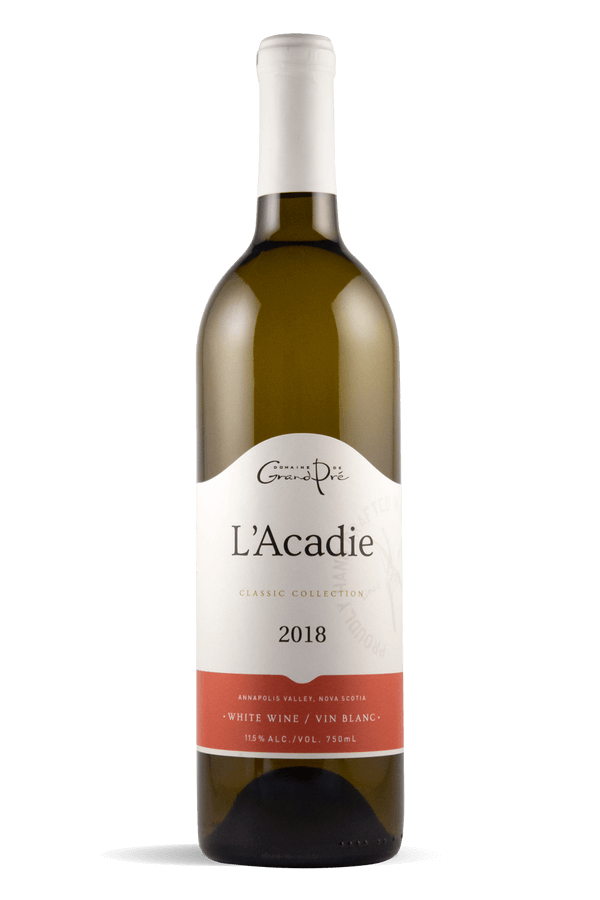5 Wines You Will Want to Try in Annapolis Valley, Nova Scotia
If you drive through Wolfville, a town on the western edge of Nova Scotia in Annapolis Valley, there’s a gothic church in the center of town that is now a brewery. Imbibers inhabit the patio, as if beer were the holy elixir of this region. But Annapolis Valley, is a region that’s home to some of Canada’s most impressive wines.
More than a dozen vineyards sit clustered like grapes in the valley: a few flourishing on either side of highway 101, and a couple more across the Cornwallis River in Port Williams.
Annapolis Valley Geography
Despite the short growing season, every winemaker is doing something beautiful and unique in the region because of its geography. First, the Annapolis Valley Ridge, formed from plate tectonics, works like a barricade, stopping many storms from entering the valley. As such, the area is kept dry, stressing the grapes so that they can build better character on the vine. The sloped fields help with drainage and grant more exposure to sunlight. Winds whip through the valley, keeping rot from damaging the fruit.
Tidal Bay Blend
Most vineyards are proudest of their Tidal Bay, a blend that must be made with select grapes from Nova Scotia and pass a blind tasting panel to carry the name. Because the Bay of Fundy offers the most extreme tides in the world, it has a great influence over the Tidal Bay expressions, which often includes L’acadie, a hybrid grape that had failed to grow in Ontario but thrived on the coastal slopes of the Annapolis Valley.
On a visit to the Annapolis Valley, wine drinkers have options for days. This itinerary should be good for a leisurely weekend.
Wines to Try & Wineries to Visit
Domaine de Grand Pre has one of the best pure L’acadie, improved at lunchtime because one can enjoy this glass of wine beneath trellised L’acadie grapes growing above the tables at the restaurant Le Caveau. Anything with seafood, like their lobster, shrimp, and scallop chowder made with an almond broth, or mussels in red Thai curry, is sublime. Afterward, guests can walk the vineyard—don’t get startled by the bird squawks over the loudspeakers that scare off the starlings—and cross the road to admire the UNESCO World Heritage Site that looks out onto expanses of green farmland, gray steeples, and red slanting cliffs.
While the region is known for its sparkling and white wines, some winemakers in the valley are making some excellent reds. Planters Ridge offers a malbec-like Heritage Red, that’s mostly made of Marquette grapes with a touch of Lucie Kuhlmann, an early-ripening grape that’s a sibling of Marechal Foch.
Even better is Luckett’s Old Bill, which is described as a black cabernet. It’s complemented wonderfully by another tall red popular at this vineyard—an historic British phone booth that sits between the grapes with its rotary dial. The phone can connect with any number in North America for free. Pair your wines or long-distance calls with excellent meats and cheeses sold in Luckett’s market.
Benjamin Bridge is another must in the valley for its traditional method sparkling wines. Their 2016 Brut from 100% chardonnay grapes is rivaled only by their Brut rosé. Outside, visitors can admire the scenery, walk the vineyards, and, of course, sip wine. Inside, you can peer into their winemaking room where wines age in everything from oak to concrete vessels, which uses natural convection currents to move the lees through the wine.
Benjamin Bridge also pours a Nova 7, which my tasting host called a “happy accident.” A few years ago, Nova 7 had not aged fully, but at the time, Benjamin Bridge had no wine to sell because everything was aging, so they decided to pour their Nova 7, a New York Muscat, early. Word of its deliciousness spread, and all two hundred cases sold out in two days. A blush-looking wine that tastes how it smells—like a bouquet of flowers—Nova 7 is wild fermented, though the fermentation process is halted early to keep the yeast from eating all the sugars. Because its sweet and pink and has slight bubbles, no restaurant menu knows how to categorize it. Across Nova Scotia, Nova 7 is called a rosé, dessert, or sparkling wine, though it’s a still white in a region where white wines are as superb and varied as the sparkling wines.
More time to spend exploring? Check out the award-winning wines at Gasperau’s red barn, beautiful rosés at Mercator, and fine organic wines at L’acadie.






